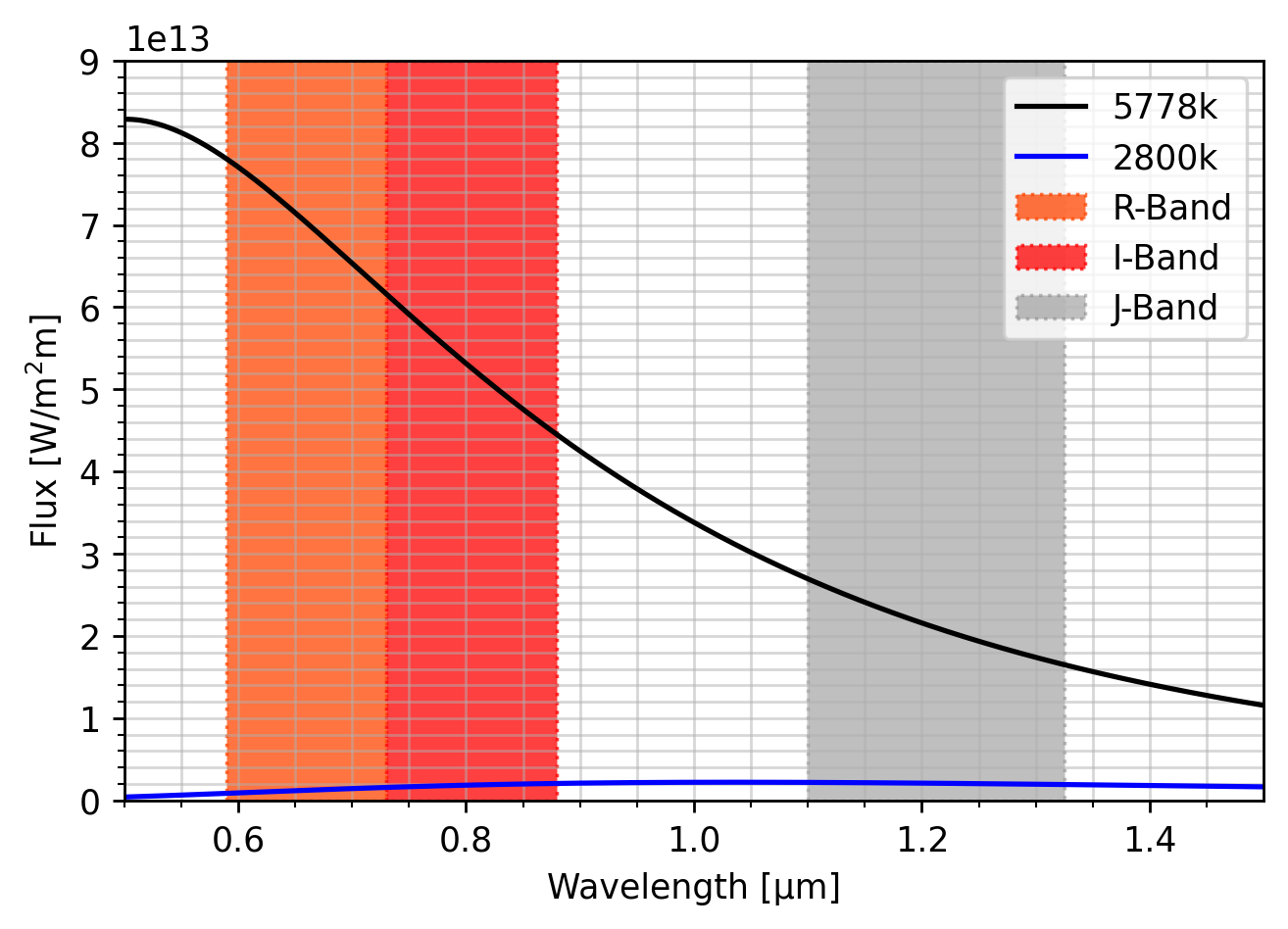J-Band Measurements for All-Hours Lunar Impact Flash Observations
- 1Aberystwyth University, United Kingdom of Great Britain (djs22@aber.ac.uk)
- 2Observatoire de la Cote d'Azur, Nice, France
- 3Institut de Physique du Globe, Paris, France
Introduction
A lunar impact flash (LIF) is a rapid burst of light caused by a hypervelocity impactor hitting the moon, releasing a fraction of its energy as light. They are observable though moderately sized (0.4m) telescopes, and are therefore observable by both amateur and professional astronomers.
LIF observations are typically performed in visible or NIR, and can only take place when the lunar phase is between 10-50%, during local night, and are only observable against the lunar night-side; the most commonly observed LIFs are faint, approximately MagI = 9, MagR = 10 [1], making them indistinguishable against the illuminated lunar background. This limits potential observations of LIFs to ~30h per month on average, with weather limiting this further.
In order to increase the average number of observable hours that LIF observations can be made, and thereby increase the number of observed LIFs, we have developed new techniques to perform LIF observations at all local times, and all lunar illuminations. This technique theoretically only requires clear weather and a visible moon.
Theory
LIFs have been shown to behave as black bodies, releasing energy according to Planck's law [2]. The temperature of LIFs observed by NELIOTA is between 1300-5800 k, with average temperature, Tavg = 2800k [3]. This average has peak wavelength of λpeak = 1.035 μm. The illuminated portion of the lunar surface is reflecting light from the sun (T = 5778 k, λpeak = 0.5 μm). In R-band and I-band, the ratio of energy radiated by the sun is greater by a factor of 57 in R-band, and 28 in I-band. My observing in wavelengths closer to the λpeak of the flash, we can improve this ratio greatly.

Figure 1:The Planck curve for the sun (5778k) and the average LIF (2750k), R, I, and J-band regions are highlighted in orange, red, and grey respectively.
As illustrated in Fig. 1, by observing in J-band the irradiance of the sun is lowered, being only 10 times greater than the 2800 k LIF. This effective dimming of the background leads to an increase in the signal-to-noise ratio (S/N) of the LIF against the sun-illuminated background.
The S/N ratio is a measure of how detectable a signal is above the background, and can be defined as:
S/N = S" / (σ × √Apix)
Where S" is the total count of the signal, σB is the standard deviation of the background, and Apix is the area of the background measurement. A S/N ratio above ≈10 is generally required for a signal to be considered detectable.
Observations
Observations were performed on 2022-02-23 from the Observatoire de la Côte d'Azur, using a 0.5 m diameter, 2 m focal length telescope with Ninox 640 II camera and J-band filter attached. For the first set of observations, high gain mode was used, for the second set of observations low gain mode was used. A 30 μm exposure time was used for both sets of observations.
The star HD137463 was observed, which has MagJ = 5.423, obtained by Simbad [4] Observations began during the night, and continued until after sunrise in order to measure the brightness of the sky during daytime.
By performing A-B subtraction to remove the dark current and background of the observed frames, as shown in Fig. 2, a pixel count for the clean star signal, S", can be obtained. As it is constant, an average for the star signal can be used as ground truth in order to calculate the S/N ratio for the daytime sky brightness, as well as the illuminated lunar surface.
Figure 2: The A-B subtraction of two observations of HD137463. The subtraction removes any dark current or background to leave only a clean positive and negative signal.
Results
The S/N ratio for the a MagJ = 5.423 star are shown in Fig. 3. A sharp decrease in S/N ratio is observed as air-glow begins around solar altitude = -5. The S/N continues to decrease, slowly levelling off around S/N = 15 as the sun reaches solar altitude = 5. This puts the magJ = 5.423 star well above the detectable threshold, and would correspond to a MagR = 6.7 LIF.
Figure 3: Left: The S/N ratio in high gain mode, of HD137463 against the sky background between solar altitudes -10 & -1. Right: The S/N ratio in low gain mode, of HD137463 against the sky background between solar altitudes -1 & -5.
By taking measurements of the lunar background brightness, we can verify the S/N ratio we would expect from these LIF when observed on the lunar surface. Table 1 contains the results from count-averaged observations of the background, and the S/N of the MagJ star if observed against the background, emulating a flash. Again, even against the illuminated bright limb, the S/N ratio is above the detectable threshold, and shows that with this system, we would be able to detect LIFs of MagJ ≥ 5.423, with the possibility of even fainter magnitudes under more favourable conditions.
Table 1: The S/N ratio of the reference star used against different regions on the lunar surface, from darkest to brightest.
| Region | S/N |
| Lunar Night Side | 147 |
| Terminator | 42 |
| Lunar Day Side | 21 |
| Lunar Bright Limb | 19 |
References
[1] Liakos et al (2019) A&A, 633, 29 pp.
[2] Eichhorn (1975) P&SS, 23, 11, 1519-1525
[3] Avdellidou & Vaubaillon (2019) MNRAS, 484, 5212-5222
[4] Wegner et al (2000) A&A, 143, p.9-22
How to cite: Sheward, D., Delbo, M., Avdellidou, C., Cook, A., and Lognonne, P.: J-Band Measurements for All-Hours Lunar Impact Flash Observations, Europlanet Science Congress 2022, Granada, Spain, 18–23 Sep 2022, EPSC2022-1077, https://doi.org/10.5194/epsc2022-1077, 2022.

